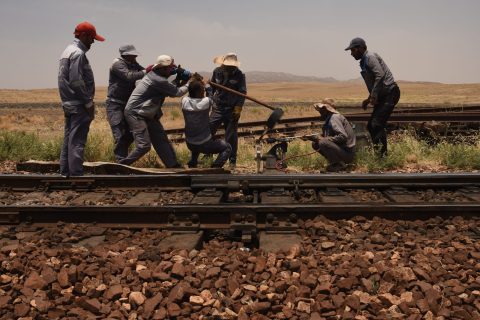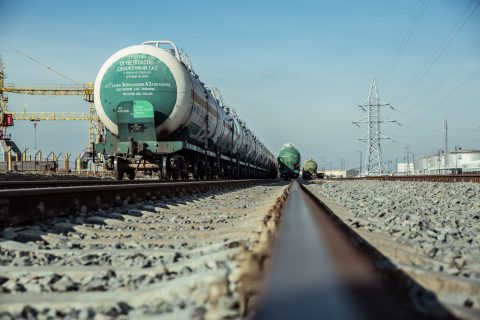BASF about New Silk Road: ‘to send 1 train, we need to take 440 pictures’

There are still many wishes on the list of BASF when it comes to chemical transport between Europe and China, and as long as there is no standardised approach to this segment of the industry, regular chemical trains on the New Silk Road remain something of the future.
At the European Silk Road Summit, Samer Ghandour made an appeal to the industry. The requirements for sending chemical cargo on a train are complicated and diverse. “To send one container, we need to make ten pictures before we can load it. Imagine what this means for a train with 44 containers. We need to hire a local photographer to launch a train”, he said.
440 pictures for 1 train
To begin with, this is something particular of the rail freight industry, as there are no such requirements in the maritime world, he explained. “We are not used to this. When sending a container by ship, we are not asked to take all these pictures. But when using the train, we need pictures of the containers, of the pallets etc.”
This is just an example of one of the administrative burders BASF is facing on the New Silk Road. Another is documentation, gross weight restrictions or specific requirements for each type of cargo. “The problem is that each platform company and each point of entry in China applies different rules and requirements. In this way, we do not know what to communicate to our partners, and what to expect. And if we did not do it right, we need to make adjustments, which takes another two weeks.”
Chemicals since 2019
BASF is sending chemicals from Europe to China since 2019. In November that year, it launched a first blocktrain from its site in Ludwigshafen to China. A bit later a secnd departure followed from Antwerp. Although these are the two most convenient departure points for the company, it is also using other hubs in Germany, such as Duisburg, Neuss or Hamburg.
Apart from box containers, it is also sending tank containers and flexitanks. But despite the possibilities and the volumes, it has not been able to launch a regular train for chemical goods on the New Silk Road. The patchwork of regulations is the main reason, says Ghandour.
‘We want to bundle cargo’
“There is also a good demand for tank container transportation. But the problem here is that we are not able to put a tank container on of the blocktrains, because the regulations differ so much. We have to depart a seperate train with only tank containers to China, which is making this not a very competitive service. We want to bundle cargo.”
In November this year, at least one wish from BASF came true, as it was able to launch to very first mixed train with containers as well as tank containers from Shanghai to Ludwigshaven. “This was a very good step in the right direction”, said Ghandour.
Dangerous goods
Another wish on the list of BASF is the possibility of sending dangerous goods to China. “This is currently out of our scope, as it is still not possible.” BASF has for a while been sending dangerous goods via the Trans-Siberian corridor, reloading the cargo in the port of Vladivostok to China. “But due to the congestion in the port, we have stopped this.
At a certain point, the journey from Japan to the Russian port took two months. It would have taken another 1 to 1.5 month to ship the cargo to Europe. Is this really reliable for BASF? Not at all!”, he uttered on stage.
Plenty of demand
“I really do not want to be all negative, but there are many things that need to be done if we want to be able to launch a reliable service of chemical goods between Europe and China. There is plenty of demand, not only eastbound but also westbound.
Harmonisation of the transport of chemical goods between all railway undertakings, rail operators, rail platforms and borders authorities is crucial for a successful and continuous business. The chemical industry needs a coherent and reliable framework in order to implement and execute transports of chemical goods along the New Silk Road.”
You just read one of our premium articles free of charge
Want full access? Take advantage of our exclusive offer





